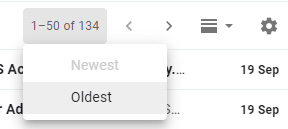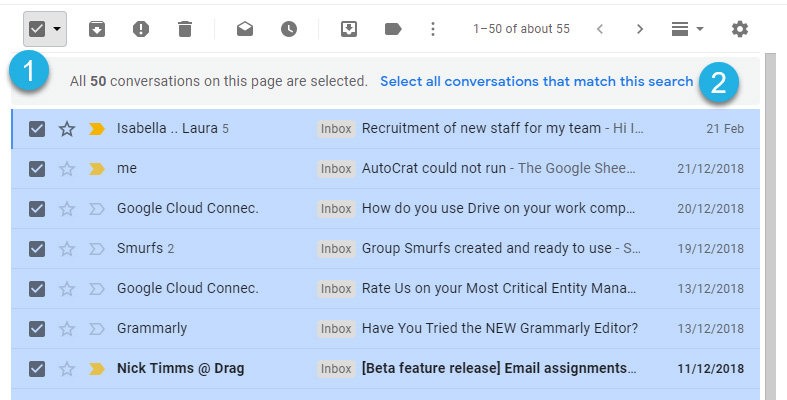It’s a new year – the perfect time to do an inbox spring clean
Samantha Garrett from Using Technology Better takes us step-by-step into how to get that Gmail inbox size down.
Why you should spring-clean your inbox
Let me start by saying this doesn’t apply to everybody.
If you’ve got your emails under control, you should have a small number sitting in your inbox.
The majority of people, however, haven’t yet achieved this state of inbox control!
If you’re opening your inbox daily to a huge email count, this is likely causing some level of frustration, anxiety, or cognitive overload (even if you don’t realise it). A spring-clean is simply an authentic wellbeing practice!
How to do an inbox spring-clean
- Find your oldest email
- Click on the email count at the top of the page to find the oldest email in your inbox
- Select ‘Oldest’ and you’ll be taken to the last page of emails
- Scroll down to find out what month or year your oldest email is (Warning, you may get a shock!)

Tip: If you are using a split inbox style (such as Priority Inbox, Unread, or Starred first) you first need to click on the email count in the ‘Everything else’ section. Then you can access the box with the ‘Oldest’ option. - Decide how you want to spring-clean
You can go year-by-year or do everything at once. I strongly recommend year-by-year if you have more than a few thousand emails in your inbox. (The process can time out if you try to archive too many at once). Year-by-year is good if you would like to apply a year-named label to emails as you archive them. - Do an advanced search
Based on your decision in step 2, use the search box to perform an advanced search for emails in your inbox.
Type in your particular date range, starting with whatever year your oldest email is from.
Use the example below as a guide (this one is searching for all emails in the inbox from 2018).

A few important things to note about this search:- The in:inbox search operator tells Gmail to just find emails in the inbox
- The after and before operators specify the date range
- To capture all emails in a specific year, use a date range that begins on 31st December of the previous year, and ends on 1st January of the following year
- If you’re using conversation view, the search results may show conversations with dates outside of the specified date period. This is because the conversation will include emails during the specified date period, as well as those from outside that range.
- Select your conversations
After the search is complete, click the ‘Select all’ box at the top of the email list. Then click ‘Select all conversations that match this search’ to select all the search results across multiple pages.

- Label your emails
Decide if you want to add a year-based label to the emails. If you don’t, skip ahead to step 6. If you do, click the ‘Label’ button and create a new label as required.You may then need to repeat step 4 to re-select all the emails after the label has been applied.
Note: All other labels already on the emails will remain in place. - Click the Archive button

- Archiving begins
The archiving will now begin. You’ll notice a ‘Loading’ message at the top of the screen.
Be patient! The archiving process can take a while. - Repeat steps 3-6 for all other years in your inbox
The easiest way to do this is to adjust the year dates in the existing search criteria. As you work through the spring clean process, you’ll notice the unread and total inbox email count start to decline – yay!
By Samantha Garrett – Using Technology Better

Did you know you can engage with Using Technology Better with your MoE Funded PLD?
Fill in this form or contact your local TWGB Account Manager for more info.













